Advertisement
Insights from the first studies of HCAHPS data in this setting
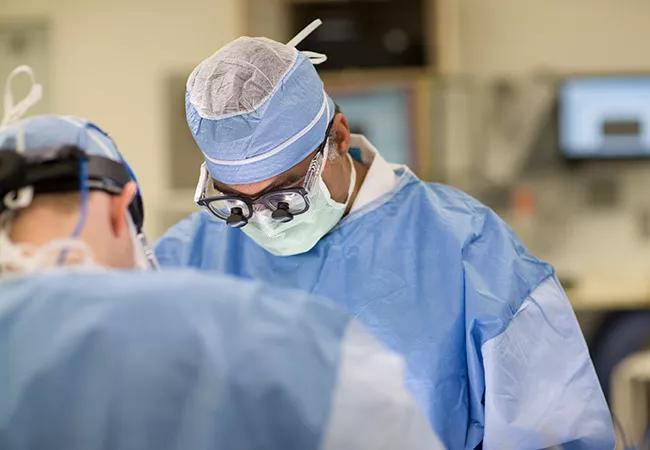
By Jay Levin and Michael Steinmetz, MD
Advertisement
Cleveland Clinic is a non-profit academic medical center. Advertising on our site helps support our mission. We do not endorse non-Cleveland Clinic products or services. Policy
The patient perspective of care is becoming an ever more integral component of how healthcare quality is defined. The Centers for Medicare & Medicaid Services has emphasized the importance of the patient experience by requiring hospitals to administer the Hospital Consumer Assessment of Healthcare Providers and Systems (HCAHPS) survey. Results from these surveys are publicly reported and incorporated with other quality measures to adjust 2 percent of Medicare hospital reimbursement. As a result, hospital administrators and spine surgeons across the U.S. are being incentivized to improve HCAHPS scores.
However, the significance of high HCAHPS scores and the patient-level determinants of a satisfying hospital experience have never previously been studied in a lumbar spine surgery setting. Our research team in Cleveland Clinic’s Center for Spine Health analyzed real-world HCAHPS data and correlated survey results with patient-level details in several recent publications in hopes of better understanding the patient experience of lumbar spine surgery. The results discussed here represent the forefront of patient experience research in the spine surgery literature.
While there is published evidence to support that patients’ perspectives of care can incentivize physicians to improve quality of care in the primary care setting, it is unclear whether this relationship exists in the surgical setting.1–5 In our study assessing the relationship between top-box overall hospital rating6 — a 9 or 10 out of 10 — and validated quality-of-life (QOL) measures following lumbar spine surgery, we found no association between “satisfaction” and one-year QOL improvement as measured by the EuroQol 5 Dimensions instrument, the Pain Disability Questionnaire and the visual analog score for back pain. These results suggest that high satisfaction with the hospital experience may not necessarily correlate with favorable outcomes following lumbar spine surgery.
To elucidate which components of the hospital experience are most important to lumbar spine surgery patients, we analyzed 460 HCAHPS surveys to determine which individual survey questions were most strongly associated with top-box overall hospital rating (unpublished data). The strongest predictors were questions under the pain management dimension (odds ratio [OR] = 12.6 [95% CI, 6.7 to 23.8]) and the nursing communication dimension (OR = 11.7 [95% CI, 5.7 to 23.8]). These findings highlight opportunities for quality improvement efforts focused on the most relevant aspects of care in the lumbar spine surgery setting.
Since untreated depression has been consistently associated with poor functional outcomes following spine surgery,7–10 we conducted a study of 237 patients who underwent lumbar fusion to determine whether preoperative depression was associated with HCAHPS scores.11 Raw percentages of HCAHPS scores were significantly lower for depressed patients on several HCAHPS questions (Figure 1).
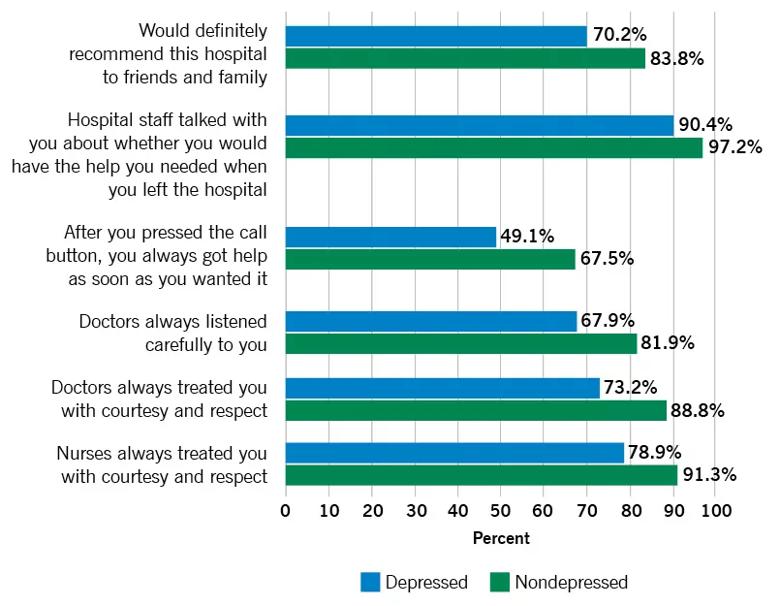
Figure 1. Raw percentages of top-box responses (i.e., 9 or 10 out of 10) by depressed and nondepressed patients on selected HCAHPS survey items. Between-group differences were statistically significant for all of these items.
Advertisement
Furthermore, multivariable logistic regression analysis revealed that patients with preoperative depression had higher odds of feeling less respected by both physicians and nurses, as well as lower odds of satisfaction with nurses’ response to their needs. These results collectively suggest that depression may be a modifiable risk factor for poor hospital experience of lumbar fusion, and that multidisciplinary intervention to treat concomitant depression may improve both hospital experience and HCAHPS scores.
There are conflicting data on whether early readmission or postdischarge complications are associated with patients’ HCAHPS responses.12,13 Since emergency department (ED) visits within 30 days after hospital discharge may reflect poor-quality care, we evaluated whether an association exists between ED visits and HCAHPS scores in a lumbar spine surgery population.14
Our results demonstrated a strong association between postdischarge ED visits and low HCAHPS scores for questions pertaining to doctor communication, discharge information and global measures of hospital satisfaction (Figure 2). However, given that ED visits occurred prior to patient completion of the HCAHPS survey in most patients seen in the ED after discharge, it is unclear whether early complications requiring ED visits influenced the low HCAHPS scores or whether a poor patient experience in the hospital led to early complications in this cohort.
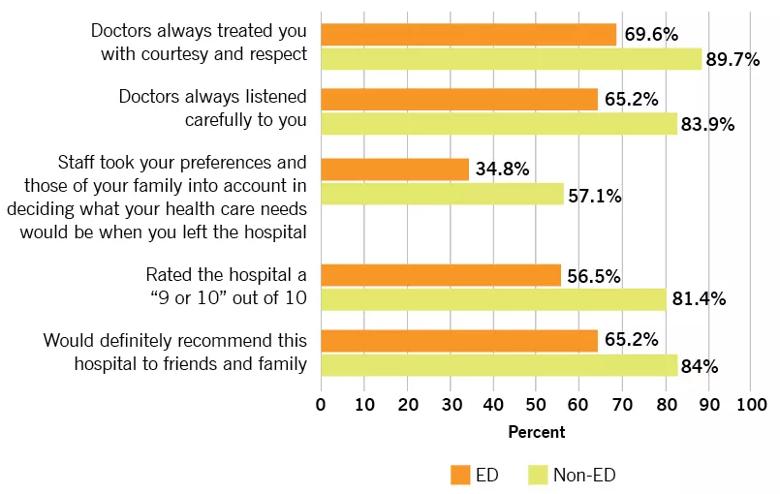
Figure 2. Raw percentages of top-box responses (i.e., 9 or 10 out of 10) by emergency department (ED) and non-ED patients on selected HCAHPS survey items. Between-group differences were statistically significant for all of these items.
No significant association was observed between high HCAHPS scores and one-year QOL outcomes in our lumbar spine surgery cohort, raising questions over whether HCAHPS can be used reliably as an indicator of quality surgical care. Additionally, pain management and nursing communication prevailed as the HCAHPS dimensions most strongly associated with a top-box overall hospital rating. In regard to patient-level associations, preoperative depression was identified as a modifiable risk factor for poor satisfaction with the hospital experience, while ED visits within 30 days after discharge were also associated with significantly lower HCAHPS scores.
These findings have helped our spine surgery team more fully understand the possible implications of HCAHPS scores and how modifiable and nonmodifiable factors may influence patient experience. We hope to use this knowledge to continue to improve our high standard of patient-centered care while achieving excellent surgical outcomes.
Advertisement
Mr. Levin is a medical student at Case Western Reserve University School of Medicine with an interest in spine care.
Dr. Steinmetz (steinmm@ccf.org) is Chairman of Neurological Surgery at Cleveland Clinic and a staff neurosurgeon in the Center for Spine Health.
Advertisement
Advertisement

Favorable rates may stem from focus on outcomes monitoring
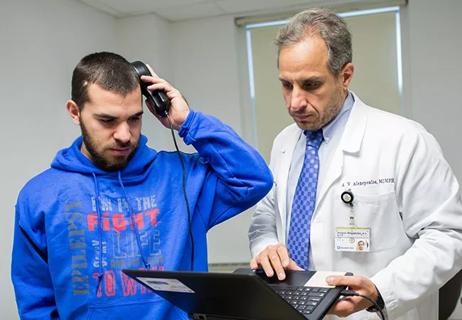
Nearly two-thirds of patients see clinically meaningful gains in large series

Treatment outcomes validate clinic's group-therapy approach

Collaboration, institutionalizing best practices are central
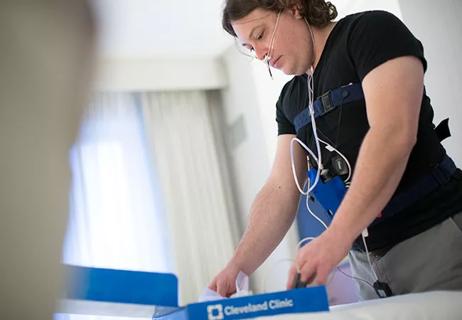
Outcomes outtakes ranging from home sleep testing to QoL effects

Diversifying the mix with intensive outpatient care, shared appointments

Most patients report relief from intractable spasms

Empowering athletic trainers to better assess, report and monitor head injury